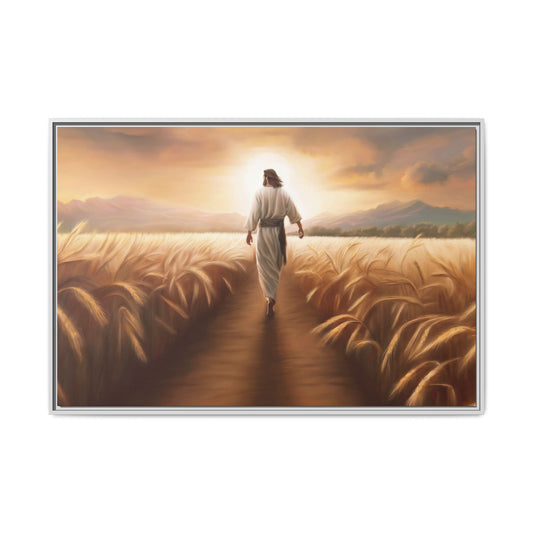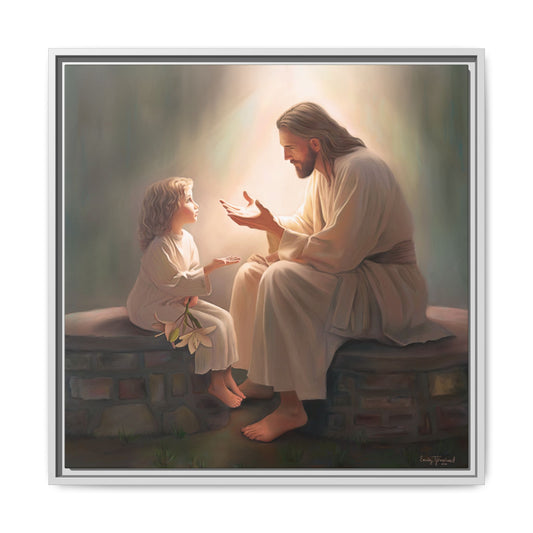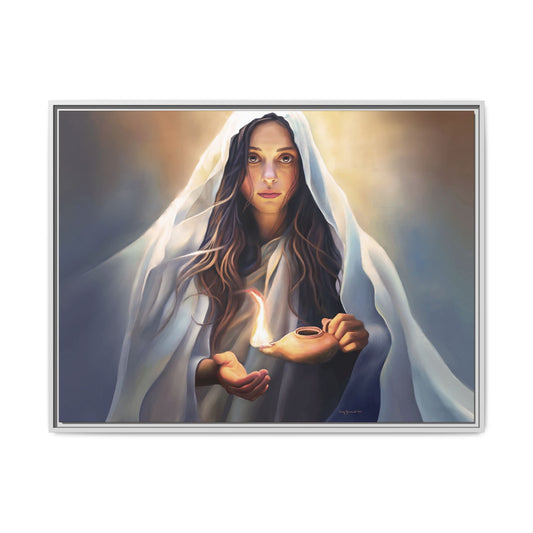
Inspiring Images of Jesus
Share
From classical masterpieces to modern interpretations, the visual representation of Jesus has long served as an evocative lens through which believers connect with their faith.
But what exactly makes an image of Jesus truly inspiring?








 Images of Jesus can serve as a reminder of His love and infinite devotion, evoking feelings of gratitude and humility.
These visual representations can transcend language and cultural barriers, speaking to the hearts of believers across the world.
As we continue to seek spiritual nourishment and guidance, the power of these images in fortifying our faith journey can't be underestimated.
Images of Jesus can serve as a reminder of His love and infinite devotion, evoking feelings of gratitude and humility.
These visual representations can transcend language and cultural barriers, speaking to the hearts of believers across the world.
As we continue to seek spiritual nourishment and guidance, the power of these images in fortifying our faith journey can't be underestimated. As we incorporate Jesus portraits into our worship, we invite His presence to permeate our hearts and minds, enriching our worship experience.
Just as a lighthouse guides ships to safety, images of Jesus can illuminate our path and guide us in our journey of faith.
As we incorporate Jesus portraits into our worship, we invite His presence to permeate our hearts and minds, enriching our worship experience.
Just as a lighthouse guides ships to safety, images of Jesus can illuminate our path and guide us in our journey of faith.
Key Takeaways
- Submission to God's will brings true freedom and contentment
- Believers find comfort in knowing Jesus as the good shepherd of their lives
- The choice to submit to God is the purpose of life

Symbolism and Representation in Jesus Portraits
When it comes to portraying Jesus as the Lord and Master, it can be meaningful to convey His authority and divinity in visual representations. These images serve to inspire worship and devotion, emphasizing the significance of Jesus as Lord in the lives of believers. As we explore the symbolism and representation in Jesus portraits, we discover the profound impact of these depictions on the perception of Jesus.
Inspiring Worship and Devotion
When we contemplate these images, we are reminded of:- Christ's profound love for us.
- His unfailing mercy and grace.
- The call to surrender and worship wholeheartedly.
Scriptures on the Image of Jesus
Here are scriptural references that, while not offering physical descriptions, have informed the spiritual and symbolic representation of Jesus Christ in art and theology: Hebrews 1:3: 'The Son is the radiance of God’s glory and the exact representation of his being, sustaining all things by his powerful word.' This verse speaks to the divine nature of Jesus, emphasizing His role as the manifestation of God's glory, a theme often explored in Christian art through the use of light and aura around His figure. Isaiah 53:2: 'He grew up before him like a tender shoot, and like a root out of dry ground. He had no beauty or majesty to attract us to him, nothing in his appearance that we should desire him.' Early Christian art often depicted Jesus in a humble, unassuming manner, reflecting this prophecy about the Messiah's ordinary appearance and emphasizing His humility and suffering. Psalm 23: The Lord as the shepherd guiding His flock has been a potent image in Christian iconography, symbolizing Jesus's care, guidance, and protection of His believers. This imagery reflects Jesus's own identification as the "good shepherd" in the Gospels. Daniel 7:9-14: Offers a vision of the "Ancient of Days" and "one like a son of man" coming with the clouds of heaven. Early Christian interpreters associated this vision with Jesus, influencing depictions of His divine authority and eternal reign. Luke 24:30-31: In the breaking of bread at Emmaus, the disciples recognize Jesus after His resurrection. This narrative has inspired artworks emphasizing the Sacroment and the revelation of Jesus in the act of communion, symbolizing His ongoing presence among His followers. The development of Jesus's image over centuries reflects a complex interplay of scriptural interpretation, theological emphasis, and artistic creativity, influenced by the cultural and historical contexts of Christian communities. While no single description or representation can fully encapsulate the figure of Jesus, the diversity of His depictions serves as a testament to the multifaceted nature of His identity and the universal reach of His message. These scriptural themes provide a foundation for understanding the varied and evolving representations of Jesus Christ, illustrating how His image has been shaped by spiritual insights and artistic expression rather than a singular historical or physical portrayal.Exploring Different Styles of Jesus Portraits
From classic and traditional artistic depictions to more contemporary and modern interpretations, artists have captured Jesus in diverse ways. Each style offers a unique perspective on the figure of Jesus, providing insight into the cultural and artistic influences of different time periods.

Creating Sacred Spaces for Worship and Prayer
Enhancing personal and communal prayer, Jesus portraits play a vital role in creating sacred spaces for worship. As we gather for prayer, these images remind us of Jesus' presence. They help us cultivate a sense of reverence and awe, allowing us to connect with the divine during our worship and prayer. These sacred spaces become sanctuaries where we encounter the peace and comfort of our Lord.

Church Settings and Worship Environments
In our church settings and worship environments, locating and employing images that can edify and inspire requires thoughtful consideration of their contextual relevance and intended purpose. When selecting images, it might help to consider biblical teachings and if the artwork complements the atmosphere of worship. These images should enhance the worship experience and reflect the reverence and adoration we have for God.
Encouraging a Deeper Understanding of Jesus' Role
As we consider the impact of Jesus' portraits on our faith and beliefs, it might benefit us to reflect on His teachings and life. Artwork can be a powerful tool for igniting a passion for following Jesus.Reflecting on Jesus' Teachings and Life
The portrayal of Jesus in the Scriptures has a profound impact on the faith and understanding of believers, encouraging a deeper connection with His teachings and life.- Jesus' teachings challenge societal norms, emphasizing love and compassion. He taught radical forgiveness- even the love of our enemies.
- His life exemplifies humility, selflessness, and forgiveness.
- Reflecting on Jesus' teachings and life inspires believers to serve others with love and grace, mirroring His example.

Connecting with the Global Christian Community
What impact do various images of Jesus have on the faith and sense of belonging of believers within the global Christian community?- Images of Jesus foster a sense of connection and unity within our global family of believers.
- They remind us that our faith is shared by millions of people around the world, creating a feeling of belonging and oneness.
- Seeing Jesus portrayed in diverse cultural settings helps us appreciate the universality of our faith and the different ways of living it.
 Images of Jesus can serve as a reminder of His love and infinite devotion, evoking feelings of gratitude and humility.
These visual representations can transcend language and cultural barriers, speaking to the hearts of believers across the world.
As we continue to seek spiritual nourishment and guidance, the power of these images in fortifying our faith journey can't be underestimated.
Images of Jesus can serve as a reminder of His love and infinite devotion, evoking feelings of gratitude and humility.
These visual representations can transcend language and cultural barriers, speaking to the hearts of believers across the world.
As we continue to seek spiritual nourishment and guidance, the power of these images in fortifying our faith journey can't be underestimated. As we incorporate Jesus portraits into our worship, we invite His presence to permeate our hearts and minds, enriching our worship experience.
Just as a lighthouse guides ships to safety, images of Jesus can illuminate our path and guide us in our journey of faith.
As we incorporate Jesus portraits into our worship, we invite His presence to permeate our hearts and minds, enriching our worship experience.
Just as a lighthouse guides ships to safety, images of Jesus can illuminate our path and guide us in our journey of faith.




